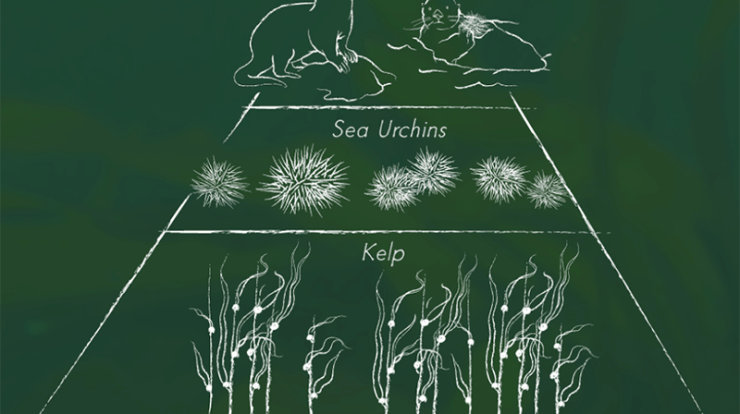Section 4-2 what shapes an ecosystem – Delving into the intricate realm of ecosystems, section 4-2 of our exploration unravels the fundamental factors that shape and mold these complex ecological communities. From the interplay of biotic and abiotic components to the profound influence of environmental conditions, we embark on a journey to uncover the dynamic forces that govern ecosystem structure and function.
As we navigate this section, we will delve into the fascinating world of species interactions, exploring the intricate dance of predation, competition, and symbiosis. We will investigate the profound impact of environmental factors such as temperature, water availability, sunlight, and soil composition on the distribution and abundance of species.
Ecosystem Components and Interactions
Ecosystems are complex systems composed of living organisms (biotic components) and their physical surroundings (abiotic components). These components interact in various ways, influencing the overall structure and function of the ecosystem.
Biotic Componentsinclude all living organisms within an ecosystem, ranging from microscopic bacteria to large mammals. They can be classified into producers (autotrophs), consumers (heterotrophs), and decomposers.
Abiotic Componentsencompass the non-living elements of an ecosystem, such as soil, water, air, temperature, sunlight, and nutrients. These components provide the physical and chemical conditions necessary for life.
Interactions Between Species
Organisms within an ecosystem interact with each other in various ways, including:
- Predation: One organism (predator) captures and consumes another (prey).
- Competition: Different species compete for limited resources, such as food, water, and shelter.
- Symbiosis: Close and long-term interactions between different species, including mutualism (both species benefit), commensalism (one species benefits while the other is unaffected), and parasitism (one species benefits at the expense of the other).
Environmental Factors

Environmental factors exert a profound influence on ecosystem structure and function. These factors include temperature, water availability, sunlight, and soil composition. They can limit or enhance the distribution and abundance of species, shaping the overall composition and dynamics of ecosystems.
Temperature
Temperature influences the metabolic rates of organisms, their distribution, and their adaptations. Species have specific temperature ranges within which they can survive and thrive. Extreme temperatures can stress or even kill organisms, affecting their reproductive success and population growth. For example, tropical rainforests are characterized by high temperatures that support a diverse array of species, while polar regions have low temperatures that limit the distribution of life.
Water Availability, Section 4-2 what shapes an ecosystem
Water is essential for all life. Its availability affects the distribution and abundance of species, particularly in terrestrial ecosystems. Arid regions have limited water resources, which can constrain plant growth and animal populations. Conversely, aquatic ecosystems are highly dependent on water availability for the survival of their inhabitants.
Sunlight
Sunlight is the primary energy source for most ecosystems. It drives photosynthesis in plants, which forms the foundation of food webs. The amount of sunlight available influences the productivity of an ecosystem and the types of species that can thrive.
For example, forests with dense canopies have limited sunlight penetration, which affects the growth of understory vegetation.
Soil Composition
Soil composition affects the availability of nutrients and water for plants. Different soil types have varying pH levels, nutrient profiles, and water-holding capacities. These factors influence the distribution and abundance of plant species, which in turn affects the composition of the entire ecosystem.
For example, acidic soils favor certain plant species, while alkaline soils support different types of vegetation.
Ecological Succession
Ecological succession refers to the gradual changes in the composition of species in an ecosystem over time. It occurs when an ecosystem is disturbed or a new habitat is created, and it proceeds through a series of predictable stages until a stable community, known as a climax community, is established.
Stages of Ecological Succession
The stages of ecological succession include:
-
-*Pioneer species
These are the first species to colonize a disturbed area. They are typically small, fast-growing plants that can tolerate harsh conditions.
-*Intermediate species
These species replace the pioneer species as the ecosystem develops. They are more competitive and can tolerate more stable conditions.
-*Climax community
This is the final stage of ecological succession, in which the ecosystem reaches a state of equilibrium. The climax community is characterized by a stable composition of species that are well-adapted to the local environment.
Role of Disturbances
Disturbances play an important role in ecological succession. They can create new habitats for pioneer species and reset the succession process. Disturbances can be natural, such as fires, floods, or hurricanes, or they can be human-caused, such as logging or agriculture.
Primary and Secondary Succession
Primary succession occurs on a newly created habitat, such as a volcanic island or a glacier-scoured landscape. Secondary succession occurs on a habitat that has been disturbed but not completely destroyed, such as a forest that has been logged or burned.|
- *Characteristic |
- *Primary Succession |
- *Secondary Succession |
|—|—|—|| Starting point | Bare rock or soil | Existing ecosystem || Rate | Slow | Faster || Species | Pioneer species | Intermediate species || Climax community | Takes longer to establish | Reached more quickly |
Human Impacts on Ecosystems: Section 4-2 What Shapes An Ecosystem

Human activities have profoundly altered ecosystems worldwide. From habitat loss to pollution and climate change, human impacts are reshaping the natural world at an unprecedented pace.
Habitat Loss
Habitat loss is the primary driver of biodiversity loss. As human populations expand and develop new areas, they often destroy or fragment natural habitats, making it difficult for species to survive and reproduce. Habitat loss can also lead to increased erosion, water pollution, and other environmental problems.
Pollution
Pollution from industrial, agricultural, and domestic sources can contaminate air, water, and soil, harming wildlife and human health. Pollutants can disrupt ecosystems by altering food chains, disrupting reproductive cycles, and causing genetic mutations.
Climate Change
Climate change is already having a significant impact on ecosystems around the world. Rising temperatures, changes in precipitation patterns, and more frequent extreme weather events are forcing species to adapt or face extinction. Climate change is also exacerbating other human impacts, such as habitat loss and pollution.
Case Studies of Ecosystem Dynamics

Ecosystems are dynamic systems that undergo constant change. These changes can be caused by natural factors, such as climate change, or by human activities, such as pollution or deforestation. Case studies of ecosystem dynamics can provide valuable insights into the causes and consequences of these changes, and can help us to develop strategies for managing and conserving ecosystems.
One well-known case study of ecosystem dynamics is the collapse of the cod fishery in the North Atlantic. Cod is a long-lived, slow-growing fish that is highly valued for its meat. In the early 20th century, the cod fishery in the North Atlantic was one of the largest and most productive fisheries in the world.
However, in the 1990s, the cod population collapsed, and the fishery was closed.
The collapse of the cod fishery was caused by a combination of natural and human factors. Natural factors included a decline in the availability of cod’s preferred prey, as well as changes in ocean currents that made it more difficult for cod to find food.
Human factors included overfishing, which reduced the size of the cod population, and pollution, which degraded the quality of the cod’s habitat.
The collapse of the cod fishery had a devastating impact on the ecosystem of the North Atlantic. Cod is a keystone species, meaning that it plays a vital role in the food web. The decline in the cod population led to an increase in the populations of other fish, such as haddock and pollock.
This, in turn, led to a decline in the populations of other animals, such as seals and seabirds, that prey on fish.
The collapse of the cod fishery is a cautionary tale about the importance of managing ecosystems sustainably. Overfishing, pollution, and other human activities can have a devastating impact on ecosystems, and it is important to take steps to protect these valuable resources.
Query Resolution
What are the key biotic components of an ecosystem?
Biotic components include all living organisms, from producers (plants) to consumers (animals) and decomposers (bacteria and fungi).
How does temperature affect ecosystem structure?
Temperature influences species distribution, growth rates, and metabolic processes, shaping the overall composition and functioning of ecosystems.
What is the role of pioneer species in ecological succession?
Pioneer species are the first to colonize disturbed areas, paving the way for the establishment of more complex communities over time.
